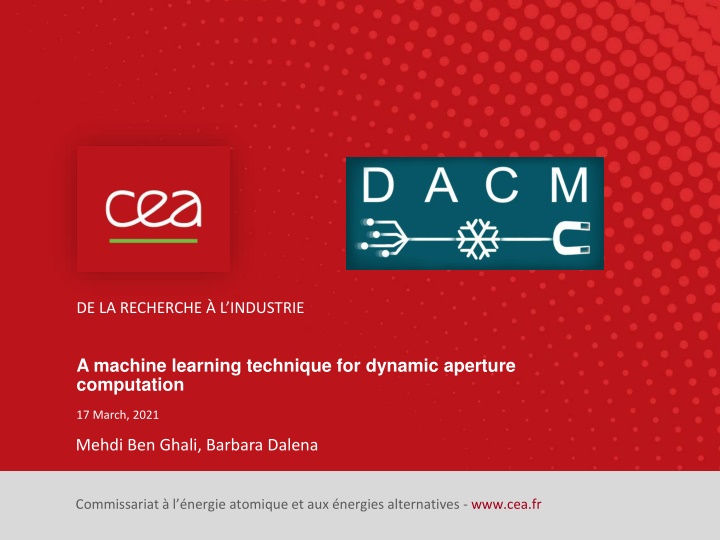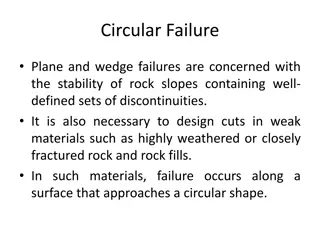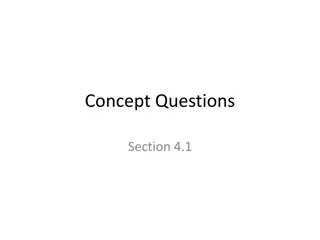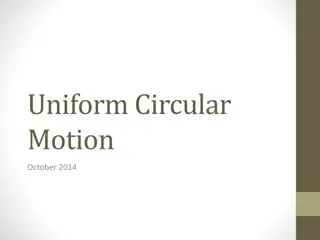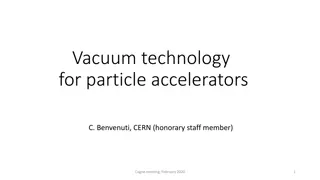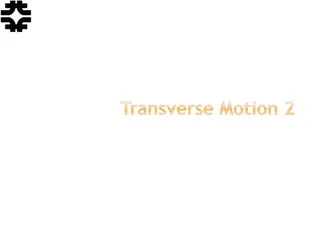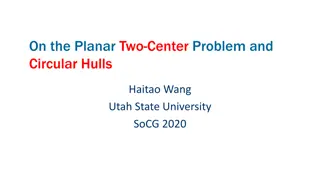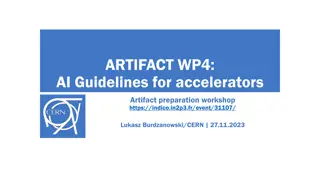Machine Learning Technique for Dynamic Aperture Computation in Circular Accelerators
This research presents a machine learning approach for computing the dynamic aperture of circular accelerators, crucial for ensuring stable particle motion. The study explores the use of Echo-state Networks, specifically Linear Readout and LSTM variations, to predict particle behavior in accelerators. Training methodologies, hyperparameter optimization, and model customization techniques are discussed in detail. The research highlights the importance of accurate dynamic aperture computation for accelerator design and optimization.
Download Presentation

Please find below an Image/Link to download the presentation.
The content on the website is provided AS IS for your information and personal use only. It may not be sold, licensed, or shared on other websites without obtaining consent from the author.If you encounter any issues during the download, it is possible that the publisher has removed the file from their server.
You are allowed to download the files provided on this website for personal or commercial use, subject to the condition that they are used lawfully. All files are the property of their respective owners.
The content on the website is provided AS IS for your information and personal use only. It may not be sold, licensed, or shared on other websites without obtaining consent from the author.
E N D
Presentation Transcript
DE LA RECHERCHE LINDUSTRIE A machine learning technique for dynamic aperture computation 17 March, 2021 Mehdi Ben Ghali, Barbara Dalena Commissariat l nergie atomique et aux nergies alternatives - www.cea.fr 17 March 2021 M. Ben Ghali InTheArt Workshop
Outlook Introduction I Linear Readout Echo-state Network II LSTM Echo-state Network Conclusion 2 17 March 2021 M. Ben Ghali InTheArt Workshop
Dynamic Aperture of circular accelerators -Dynamic Aperture represents the area of stable motion of a particle in an accelerator. determined using large HPC tracking simulations. It is currently -Datasets simulations provided by tracking - DA computed for different machines configurations (defined by randomly distributed magnetic field errors), called seeds - 60 seeds of each type : with DA values for 10000 and 100000 turns respectively 3 17 March 2021 M. Ben Ghali InTheArt Workshop
Echo-state Network -An input is represented by a reservoir state , a random fixed representation into a higher space -Successive reservoir states are then calculated recurrently using previous states and new inputs -The reservoir output is then obtained using trainable output weights Update formula Output Ridge Regression Readout : 4 17 March 2021 M. Ben Ghali InTheArt Workshop
I Linear Echo-State Network - Training Traditionally : Use the first points in a series for the training. The remaining points are predicted recurrently from the last reservoir state. Unsuccessful in our case , so we use a different process : Weights are randomly initiated, all are fixed except output - Training seeds are reserved - For each training seed : > Start a new reservoir > Updated for all data points > Save states in global state matrix - Training (once) : Compute output - weights using Ridge regression Prediction (for each test seed) : > Initiate a new reservoir > Updating using the first data points of the seed > Run it generatively to predict the remaining points - 5 17 March 2021 M. Ben Ghali InTheArt Workshop
I Linear Echo-state network Hyperparameter optimization Summary Grid search parameters pairs all Spectral radius 0.37 0.35 Connectivity 0.95 0.8 Leaking rate (a) 0.04 0.25 Tanh leak (t) 0.35 1 Ridge coefficient (lambda) 5 5 Score 0.094 0.086 17 March 2021 6 M. Ben Ghali InTheArt Workshop
I Linear Echo-state network Model customization New additions : Teacher-forcing - Data sampling - Fixing random generator seed - Data Scaling - Introducing a polynomial component to the regression - Dropping the first reservoir states - The latter two had a minor effect on performance. Data scaling and teacher-forcing improve performance. 17 March 2021 7 M. Ben Ghali InTheArt Workshop
I Linear Echo-state network Performance The model has an improved performance compared to the minimal With the following parameters : a = 0.25, t =1 Connectivity = 0.8 Spectral radius = 0.35 250-unit reservoir [-1,1] min max scaling teacher forcing Ridge regression, 5.0 coefficient 20 training seeds, 30 test seeds - - - - - - - - Capable of yielding non-linear solutions. Good average error scores (0.048) (within the error margin allowed for DA applications) - - 17 March 2021 8 M. Ben Ghali InTheArt Workshop
I Linear Echo-state network Shortcomings - Some strong outliers have predictions that are out of target range and make model unreliable for real use cases. - Comparable training and testing error 17 March 2021 M. Ben Ghali 9 InTheArt Workshop
I Linear Echo-state network Testing on long seeds Performance is worse when we run model with long seeds - Higher error values - Many of the seeds diverge from real values With a 20/30 train/test split : Less error on training data (overfitting) - 17 March 2021 10 M. Ben Ghali InTheArt Workshop
I Linear Echo-state network No training seeds 17 March 2021 11 M. Ben Ghali InTheArt Workshop
II LSTM Echo-state network A type of recurrent network the that keeps track of prediction history using a memory - In a recent paper1, a similar structure using reservoirs to track the long-term and short-term history of the model shown great results in predicting time series data. - We reproduce the principle with the following architecture : > A short-term reservoir : At one reservoir step, initiated using past n inputs and updated n times before being used to compute current state > A long-term reservoir : Only updated every few steps using the last long state and output > A regular reservoir States are then stacked, and used for training and prediction (1) K. Zheng, B. Qian, S. Li, Y. Xiao, W. Zhuang and Q. Ma, "Long-Short Term Echo State Network for Time Series Prediction," in IEEE Access, vol. 8, pp. 91961-91974, 2020, doi: 10.1109/ACCESS.2020.2994773. 17 March 2021 12 M. Ben Ghali InTheArt Workshop
II LSTM Echo-state network Overall performance Model almost only results in linear predictions. - More training than test error. - To achieve better performance than the regular reservoir model, we need a lot of training examples (50 seeds). A 50-50 split results in comparable performance to previous model, only linear. - This means we use a lot of data to make only a few predictions. - 13 17 March 2021 M. Ben Ghali InTheArt Workshop
II LSTM Echo-state network Prediction on long seeds - The best performance on long seeds yet - Even lower testing error than on short seeds : this could be explained by the fact that the LSTM model responds well to more data But : - Higher training error than shorter seeds (meaning specific seeds still influence prediction) 14 17 March 2021 M. Ben Ghali InTheArt Workshop
II LSTM Echo-state network No training seeds 15 17 March 2021 M. Ben Ghali InTheArt Workshop
Conclusions and perspective - ESN shows strong potential for dynamic aperture computation. - DA data scarcity limits technique effectiveness however. A model which does not need as much data as current examples must be achieved. In the future : - Benchmark model on reference time series data - ANN readout layer - Several r servoirs for one seed - Try time series decomposition solutions with current models (statsmodels tsa library) 16 17 March 2021 M. Ben Ghali InTheArt Workshop
Merci de votre attention Commissariat l nergie atomique et aux nergies alternatives - www.cea.fr 17 March 2021 M. Ben Ghali InTheArt Workshop
